Kiteboarding: Handplant Transition
Heads up. We do not recommend you try this with solid objects. This is a very advanced trick.
Today we are going to go over how to do a handplant transition. This is the first video in our advanced transition playlist. Normally we focus on beginner and intermediate level tricks, so don't worry; we have some easier transitions lined up for this playlist. Even if you're a newer kiteboarder, this is a fun one to practice. Just make sure you avoid solid objects at all costs. The trick, broken down, is a combination of a back roll, a light touch to the water, and a kiteloop and a half for the transition. There is a lot going on here! We'll break down everything you need to know in this blog.
We recommend you download the attached PDF on your phone. Check it before your next session!
If you know how to do hand drags this is going to feel familiar, but it brings a fresh spin to the trick. If you don't know, don't worry; you can still learn this. That said, it will be a lot easier if you can do the hand drag first. Remember, you'll want to learn this on the open water with lots of room. Avoid solid objects while learning this move. It takes a lot of practice to get the timing correct.
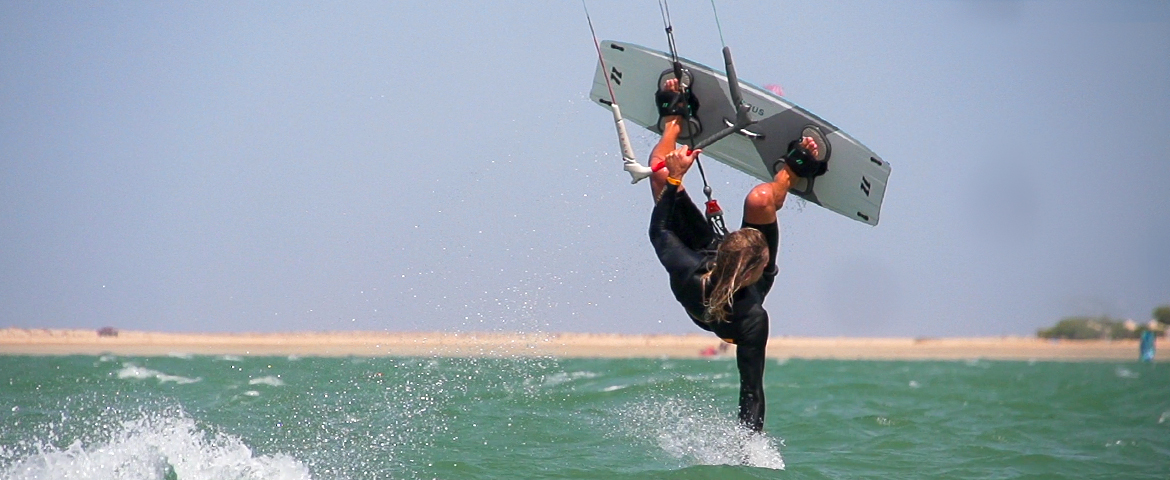
This is similar to a back roll hand drag
Step One- Master the Hand Drag
The first step to learning this trick is to master the back roll hand drag. We've done a few videos covering the topic now. The only difference between these two tricks is that you'll be using a harder pop and kitelooping with an extra half kiteloop to transition the other way. This is a very advanced trick and can actually be dangerous if you try to involve solid objects too soon.
Back Roll Hand Drag Recap
To recap the hand drag: Come in with good speed. Do a light pop. Lean back, look over your back shoulder and let your shoulder drop while swinging your front knee and hip into your chest. Reach down and let your hand drag though the water. You will be swinging under the sent kite like a pendulum while you drag. As the kite reaches the end of the wind window, your back roll should be complete. Pull a kiteloop and tuck both of your knees in while looking at your landing. Land downwind and ride away.
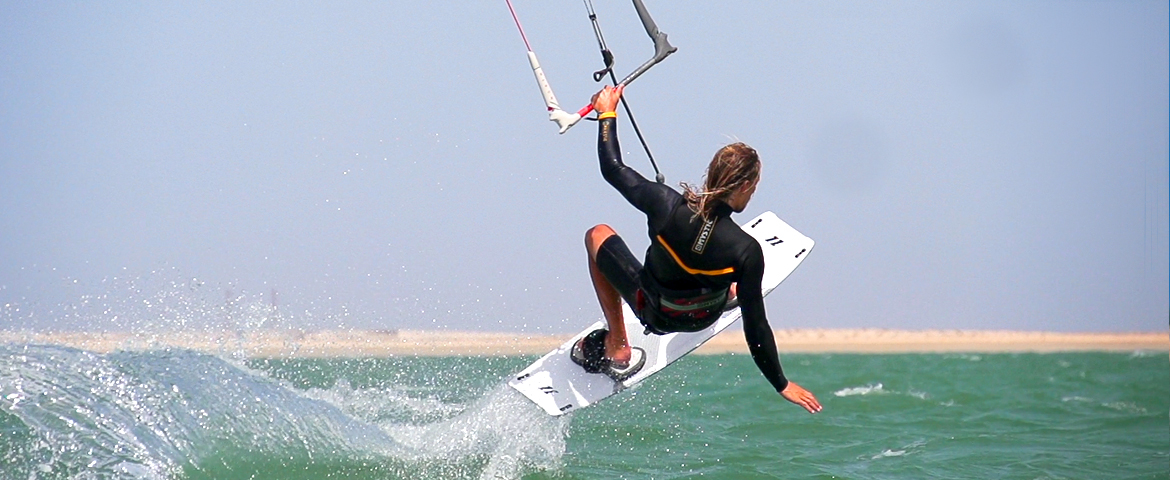
Use a medium pop
Step Two- Use a Light to Medium Pop
Unlike a big jump, you want to pop lightly. Load the kite up and send it towards noon. As the kite approaches the apex, use a light to medium pop, depending on how high you would like to go. It's best to start with light pops so you can work on touching the water or a piece of chop.
If you pop too hard, you'll get a lot of air and end up doing a big backroll instead. The goal of this step is to get your timing down.
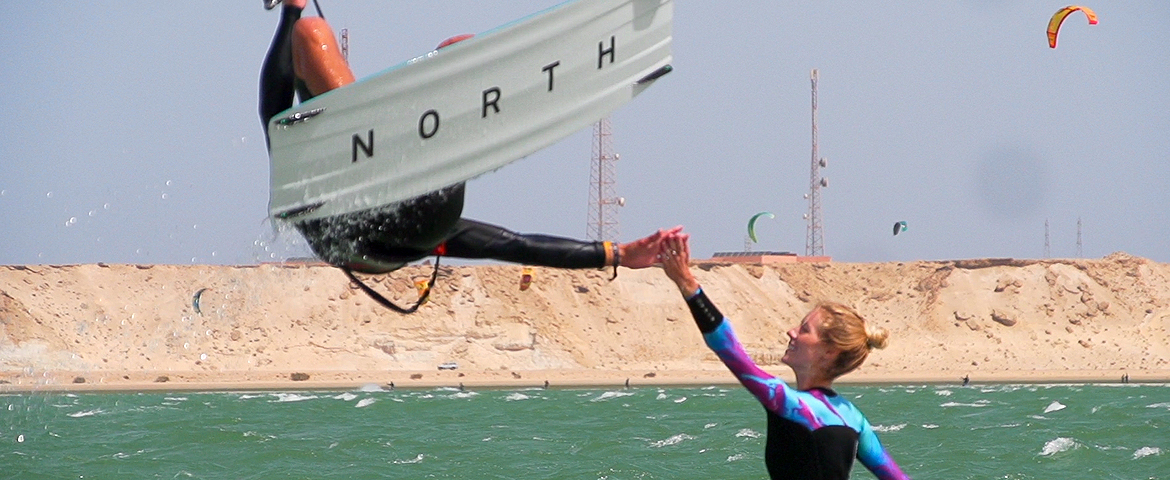
Practice a soft tap on the water
Step Three- Soft Touch on Water
The handplant is actually a soft touch. Unlike snowboarding or skateboarding, you don't need to take all the weight into your wrist and arm. The kite will be holding you up. Really, you are mimicking this classic pose but taking advantage of the kite's power- something that makes our sport unique.
It's important to keep this in mind as the kite can generate a lot of speed and power. If you get to the level where you're capable of giving someone a high five or tapping a bush, you don't want a hard impact.
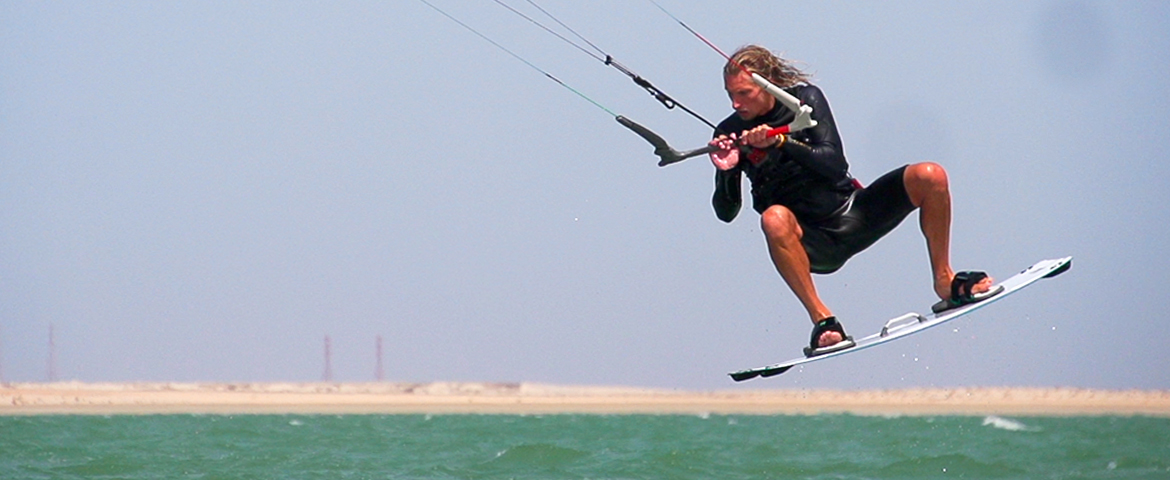
Spot your landing
Step Four- Look at Your Landing
Spot your landing over the back shoulder, waiting for the pull of the kite, rotating your body, and then coming around for the landing. Where your eyes are looking, the body will follow. This is important for every trick, but especially when throwing a kiteloop. Lining your body up with the landing is important just like it is in an airplane. The more of an angle you come down at, the harder the landing will be. Absorb on impact and have your board flat, with your body weight centered over it.
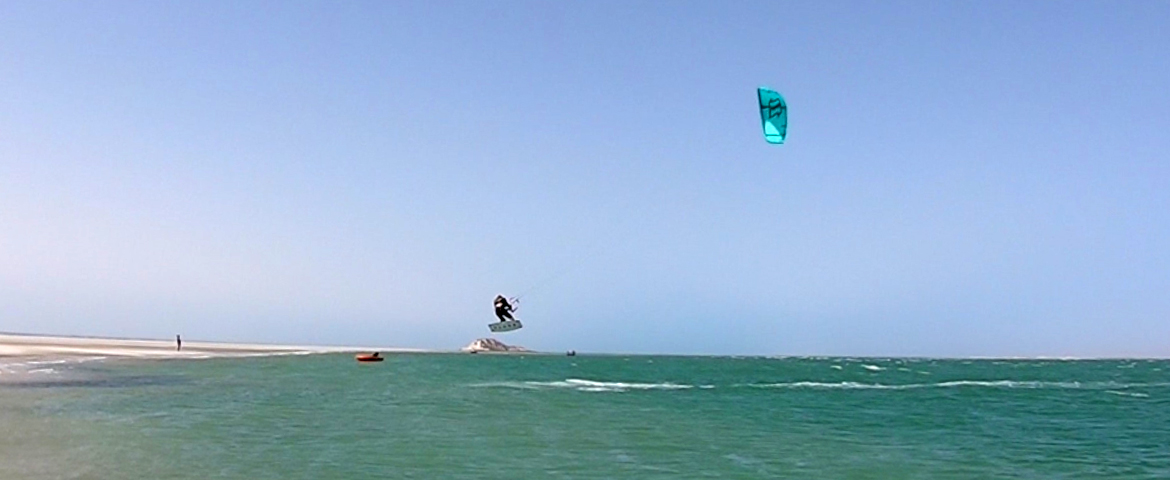
Step Five- Putting it Together
Come in with good speed, send the kite, and pop accordingly. Look over your back shoulder and drop the shoulder down towards the water. At the same time, bring your front knee hard into your chest and poke the back leg towards the sky. You will be swinging under the kite like a pendulum. Near the end of that swing, reach down and lightly touch the water. About the same time, you will be initiating the kiteloop. Get ready as this is going to pull you back up and out of the roll. Keep your eyes on the water and let your body unwind. Point your nose or tail towards the kite and prepare to land downwind. Ride downwind to absorb the landing. Make sure you redirect the kite into your new direction. If you land with your nose, you'll do a half loop and ride out toeside. If you land with your tail, this will become your new nose as you ride out heelside.
Remember to keep your front knee tucked throughout this trick to help contain your rotation and pull you into a smooth rotation. If your legs are extended, the loop can throw you off axis and disorientate you.
Staying small and tucked throughout the roll will give you control. Keeping control is key, and having your back leg tweaked will give you total control and correction. Land flat, but prepare to edge once you have control.
Just like all of the other loops, sheeting out is important for a nice, smooth landing. Sheeting out on the bar acts like a parachute and catches you as you’re falling. Holding in on the bar will keep power in the kite, pulling you harder downwind. The kite will open up and shoot above your head as you come down to the water. Right before you touch down, pull in on your front hand so you don't outrun the kite and have it pull you into the landing.
As always, land flat with your "nose" pointing downwind for safety.
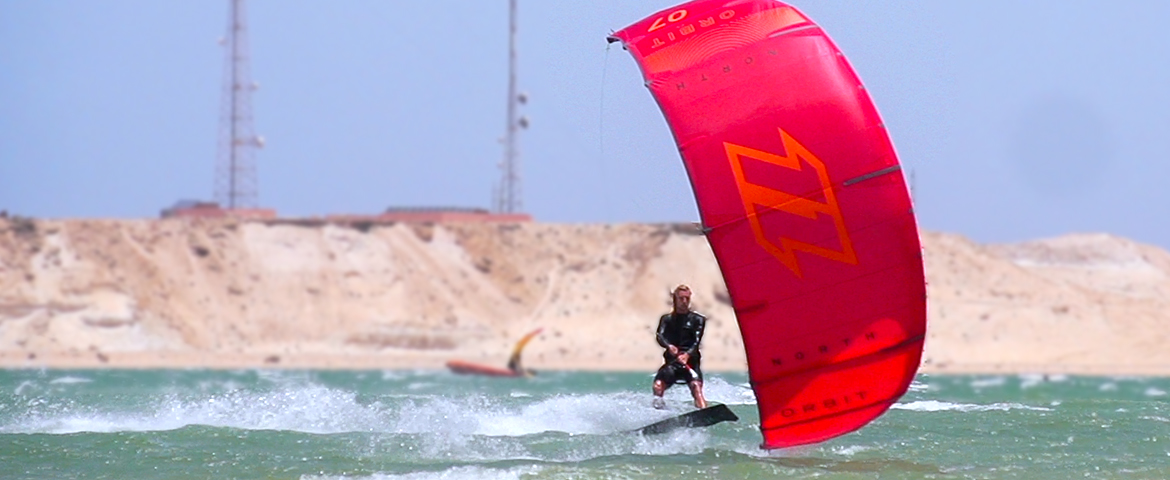
The North Orbit and Atmos
Gear Used for this Playlist
We had the chance to try out all the new North kiteboarding equipment for the brand launch in Dahkla, Morocco this summer. For this playlist the Orbit was the top choice: fast turning, quick to catch you on loops, and tons of hangtime. A true performance big air kite. In contrast to previous kites we've used on past playlists, the Orbit is faster, more energized and aimed at performance big air riding. Yet, it seems to lack some of the low end of the Cabrinha Switchblade we often film with. It's also more user-friendly than the FX that we often use when looking for a faster performance kite. It sits right between these two kites for riders that want a lofty and reactive kite.
We also used the North Carve for a good portion of the filming. While it is a surf kite, we wanted to demonstrate the all-around potential that the Carve brings to the table.
Ride the Gear
North Orbit - Big Air / Performance
North Atmos - Big Air / Performance
North Carve - Waves / All Around
North Focus - Wakestyle / Freestyle
-Written and produced by Blake Olsen & Ryan (Rygo) Goloversic.
 Blake Olsen
Blake Olsen
A Michigan boy through and through (even though he was born in Saudi Arabia), Blake is a youth with a lifetime of experiences and adventures. Not only that, he's passionate about sharing his zest for life with others. He is proficient at many fields, including kiteboarding and acting as concierge to any who simply ask. Looking for an adventure? Well, Blake is your guy. From sailing the Gulf and the Caribbean to backpacking Hawaii and Southeast Asia, he knows his stuff and can make your vacation into an adventure.
Webpage: BlakeTheOlsen.com
Instagram: @BlakeTheOlsen
 Ryan (Rygo) Goloversic
Ryan (Rygo) Goloversic
Many people dream of quitting their job, traveling the world and pursuing their passions. Rygo is one of those people who pulled the trigger. A few years into a postal career, he decided to change everything and travel as a kiteboarder, freelance videographer & writer. His mission is to help people and share the stoke. Get out there and kite!
Producer of: Ride with Blake I Sessions I Versus I Destinations I Foil Fridays
Recent Posts
-
Kiteboarding | Crafting the Harlem Force Kite with Sustainability and Performance
Unparalleled Performance Meets Unmatched Sustainability The kiteboarding industry is on …24th Apr 2024 -
Duotone Ventis 2025 | What's New?
If you're familiar with Duotone's Ventis, you know its specialty is freeriding in light wind …23rd Apr 2024 -
Duotone Ventis D/LAB 2025 Overview
If you ride in an area with multiple light wind days and need a wing that'll let you get o …23rd Apr 2024





